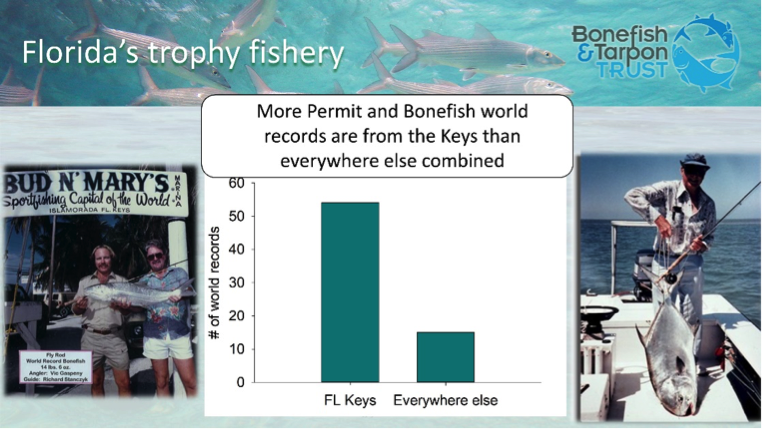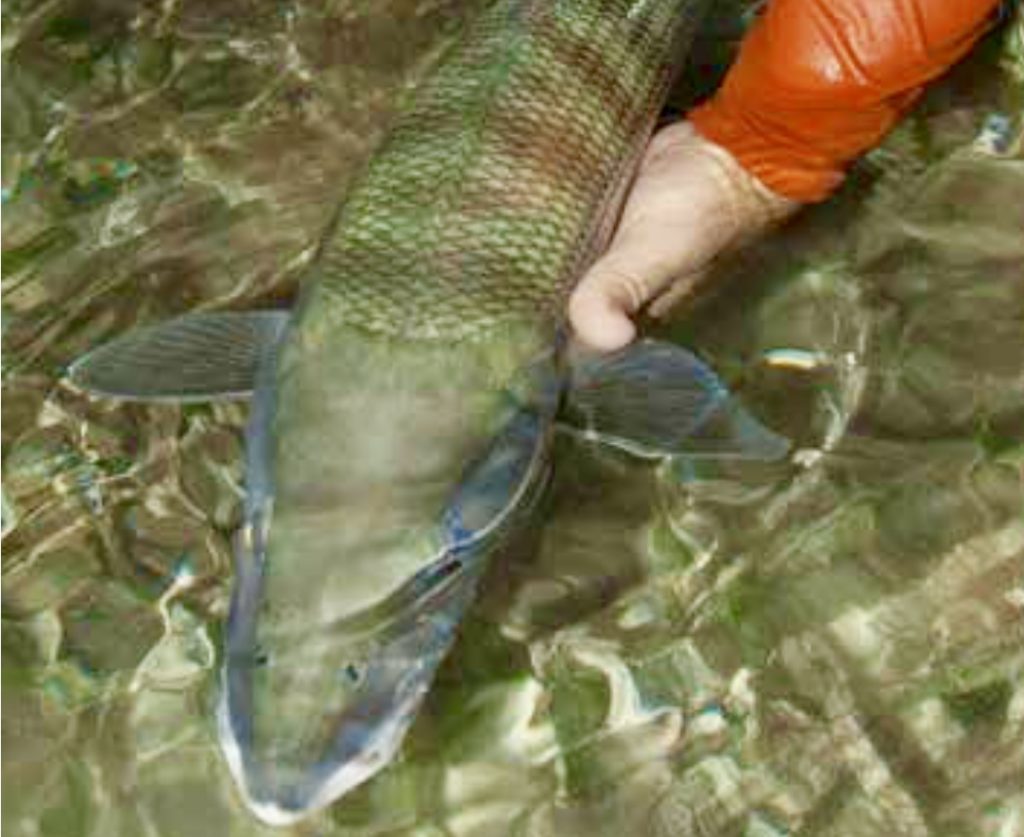Photo: Dr. Aaron Adams
This series of blog posts will summarize five exciting discoveries about bonefish biology made by Bonefish & Tarpon Trust and our collaborators over the past 20 years. And be sure to tune in to BTT’s Facebook feed this Friday, April 10, at 12 pm EST. Dr. Ross Boucek, BTT Florida Keys Initiative Manager, and Justin Lewis, BTT Bahamas Initiative Manager, will be discussing BTT’s bonefish discoveries LIVE and answering your questions!
BTT’s approach to conserve bonefish involves learning where all of the habitats bonefish use throughout their lives are, including where they spawn, where the juveniles are, and how much flats habitat the fish need, so we can protect those areas, and make sure the fish are safe. Click HERE to read Part 3 in the series.
#4 The Florida Keys fishery is a trophy fishery because the bonefish grow really fast!
Different places throughout the Caribbean are known for different qualities of their bonefish fisheries. Andros in the Bahamas is known for great sight-fishing, agreeable fish and plentiful fish. The Florida Keys are known for trophy bonefish. In fact, more world record bonefish have been caught in the Keys than everywhere else in the world combined. There is a clear reason for our big fish: the fish here grow really fast! A 20-inch bonefish in the Keys is around four years old, whereas in Andros, a fish of that same size may be closer to 20 years old. While we don’t know exactly why our bonefish grow really fast, we suspect that it could be because food is more plentiful and more nutritious in the Keys compared to other places. Diet studies on bonefish in the Keys show that adult fish rely more on toadfish. In the Bahamas, bonefish eat more invertebrates, like snails, crabs and shrimp, which generally have less than half the calories per gram than a fish like a toadfish.





